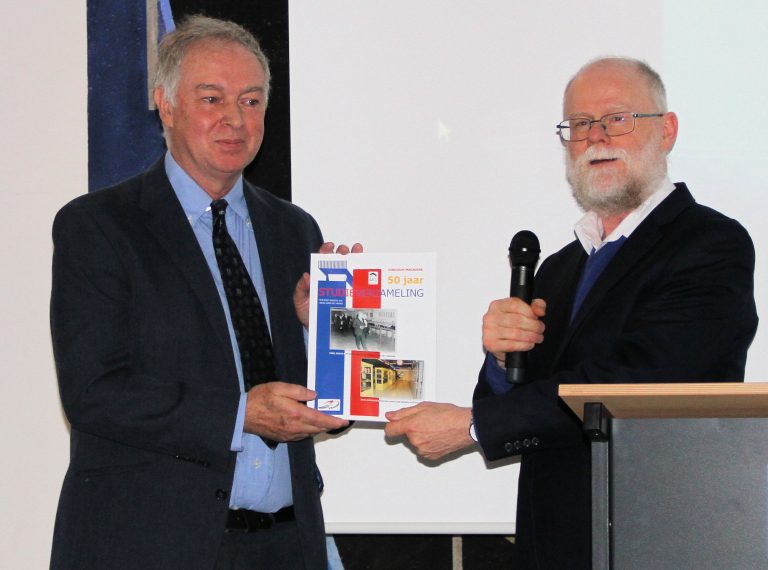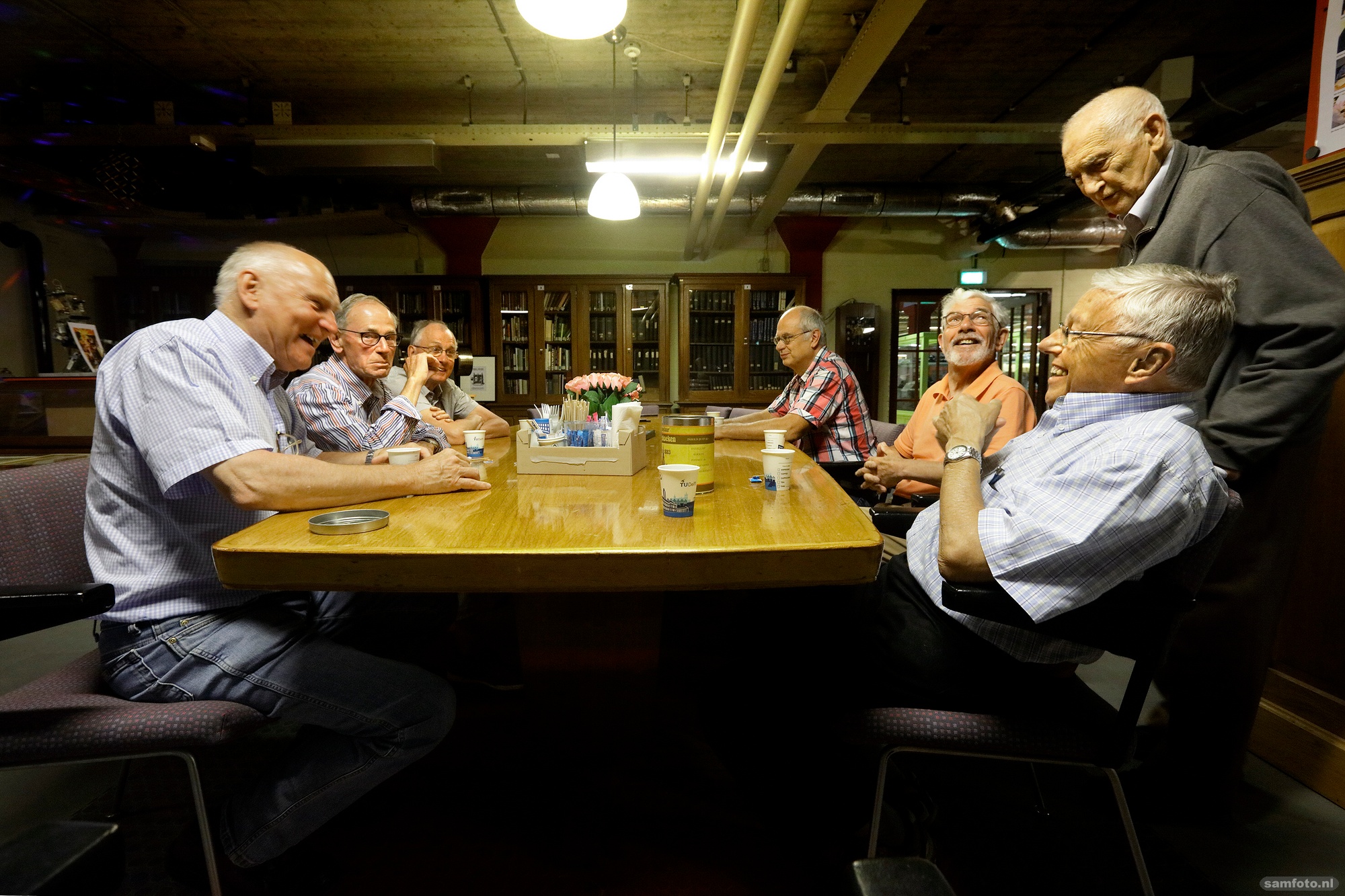Over the next 18 months, project leader Charlotte Boelens and the ‘cellar men’ are compiling an inventory of the EEMCS collection. What are the key components?
The cellar men start every Monday morning with a coffee. (Photo: Sam Rentmeester)
Project leader Charlotte Boelens could hardly believe her eyes. She had barely climbed down the steep stairs when she was surrounded by hundreds of radios, generators, transformers as big as fridges, and cupboards bursting with relays from the first computers. “What a collection!”, she exclaimed to a group of loyal volunteers, many of them old staff members, who have taken care of the electronic heritage of the EEMCS cellar. They are known as ‘the cellar men’ in the Faculty of Electrical Engineering, Mathematics and Computer Science.
“It’s very touching to see how dedicated the cellar men are to our collection,” says EEMCS Dean Prof. John Schmitz. “They won’t even throw away one screw.” But this is now up for discussion. “A value-based inventory must clearly list the important pieces and the less important things so that we can identify the key components. The rest of the things don’t need to be thrown away. They can be kept in the depot and exchanged with museums.”


EEMCS’s study collection is now 50 years old. In honour of this, an anniversary magazine was published on 28 November. Dean Schmitz handed the first copy to Maarten Oberman whose father played a leading role in the building of the EEMCS tower and who was at the birth of the electrical collection in the cellar 50 years ago.
Too many objects?
That collection is estimated to consist of 20,000 items and 25,000 radio tubes and measures about 2,000 square metres of floor area. “The collection is perhaps on the large side to store it like this,” says Schmitz carefully. “What are the implications? How can you fit it all in? We are now seeking advice on this.”
When the idea of moving the EEMCS Faculty was under discussion two years ago, the question of the future of the collection in the cellar was current. Schmitz obtained advice from Frank Bergevoet of the Cultural Heritage Agency, academic heritage expert Sylvia Nijhuis and university historian Abel Streefland of TU Delft Library. On 1 September 2019, Charlotte Boelens was appointed project leader for the stocktaking of the collection.
Boelens and the cellar men are working on a global inventory and not, as was previously done, object by object. This would take much too long. “The sub-collections and sub-categories will be used to design a content management system,” explains Boelens. “Objects will be slotted into the categories.” Important objects will be photographed, described and included in a database.
Canon of Electronics
The cellar men are also working on an online canon of the history of electronics in the Netherlands. This will identify the items that have a value in being used as examples.
Schmitz can name by heart the electron tubes of Professor Bernard Tellegen and the first computers of Professor Willem van der Poel.
The inventory and the canon are expected to be completed in 18 months time. They will be used to identify objects from the collection for valuing. If they are known to have played a role in TU Delft’s history or in education at large, their value will increase. But, says Schmitz, “We need to agree on the criteria for keeping objects. We are not that far yet.
Video: TU Delft TV
Do you have a question or comment about this article?
j.w.wassink@tudelft.nl


Comments are closed.